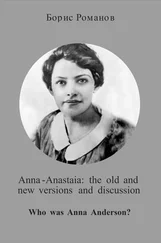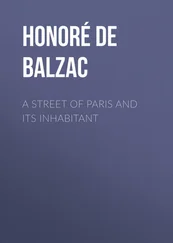Henry Edwards - Old and New Paris - Its History, Its People, and Its Places, v. 1
Здесь есть возможность читать онлайн «Henry Edwards - Old and New Paris - Its History, Its People, and Its Places, v. 1» — ознакомительный отрывок электронной книги совершенно бесплатно, а после прочтения отрывка купить полную версию. В некоторых случаях можно слушать аудио, скачать через торрент в формате fb2 и присутствует краткое содержание. Жанр: foreign_antique, foreign_prose, Путешествия и география, на английском языке. Описание произведения, (предисловие) а так же отзывы посетителей доступны на портале библиотеки ЛибКат.
- Название:Old and New Paris: Its History, Its People, and Its Places, v. 1
- Автор:
- Жанр:
- Год:неизвестен
- ISBN:нет данных
- Рейтинг книги:4 / 5. Голосов: 1
-
Избранное:Добавить в избранное
- Отзывы:
-
Ваша оценка:
- 80
- 1
- 2
- 3
- 4
- 5
Old and New Paris: Its History, Its People, and Its Places, v. 1: краткое содержание, описание и аннотация
Предлагаем к чтению аннотацию, описание, краткое содержание или предисловие (зависит от того, что написал сам автор книги «Old and New Paris: Its History, Its People, and Its Places, v. 1»). Если вы не нашли необходимую информацию о книге — напишите в комментариях, мы постараемся отыскать её.
Old and New Paris: Its History, Its People, and Its Places, v. 1 — читать онлайн ознакомительный отрывок
Ниже представлен текст книги, разбитый по страницам. Система сохранения места последней прочитанной страницы, позволяет с удобством читать онлайн бесплатно книгу «Old and New Paris: Its History, Its People, and Its Places, v. 1», без необходимости каждый раз заново искать на чём Вы остановились. Поставьте закладку, и сможете в любой момент перейти на страницу, на которой закончили чтение.
Интервал:
Закладка:
He next proceeded towards the grand throne, and, as he ascended it, was followed by his brothers, bearing the train of his robe. Then the Pope, according to custom, advanced to the foot of the throne to bless the new sovereign, and to chant the very words which greeted Charlemagne in the basilica of St. Peter, when the Roman clergy suddenly proclaimed him Emperor of the West: “Vivat in æternum semper Augustus!” At this chant shouts of “Vive l’Empereur!” resounded through the arches of Notre Dame, while the thunder of cannon announced to all Paris the solemn moment of Napoleon’s consecration.
The coronation of Napoleon has been made the subject of a masterpiece by David, whose work may be seen, and with interest studied, in the galleries of Versailles. The moment chosen by the painter is that at which the Emperor, after crowning himself with his own hands, is about to place the crown on the head of Josephine, in presence of the Pope, the cardinals, the prelates, the princes, the princesses, and the great dignitaries of the Empire. There are no less than 150 figures in this composition, and the portraits, conscientiously painted, are, for the most part, very like. The two principal figures occupy the centre of the picture. Napoleon is standing up on one of the steps of the altar, clad in a long tunic of white satin and a heavy cloak of crimson velvet sprinkled with golden bees. His hands are raised in the air, holding the crown which he is about to place on the head of the Empress. Josephine is kneeling on a cushion of violet velvet, attired in a white dress, above which she wears a crimson cloak sprinkled with bees, held up by Mme. de la Rochefoucauld, and Mme. de Lavalette, both in white dresses. Behind the Emperor is the Pope, seated in an arm-chair and holding up his right hand in sign of blessing.
David had originally represented Pius VII. with his hands on his knees, as if taking no part in the solemn scene. Napoleon, however, insisted on the painter giving him the attitude just described. “I did not bring him here from such a distance to do nothing!” he exclaimed.
“In his picture of the coronation,” says M. Arsène Houssaye, “David, carried away by his enthusiasm, has reached the inaccessible summits of the ideal. His Napoleon is radiant with health, strength, and genius. The face of Josephine beams with conjugal tenderness and exquisite grace. The group formed by the Pope and the clergy is exceedingly fine.”
The execution of this picture occupied David four years. When it was finished Napoleon went to see it, not, by any means, for the first time, and said to the painter: “Very good; very good indeed, David. You have exactly seized my idea. You have made me a French knight. I am obliged to you for transmitting to future ages the proof of an affection I wished to give to her who shares with me the responsibilities of government.”
When the picture was exhibited a friendly critic pointed out to the painter that he had made the Empress younger and prettier than she really was. “Go and tell her so!” was the reply.
CHAPTER V
ST. – GERMAIN-L’AUXERROIS
The Massacre of St. Bartholomew – The Events that preceded it – Catherine de Medicis – Admiral Coligny – “The King-Slayer” – The Signal for the Massacre – Marriage of the Duc de Joyeuse and Marguerite of Lorraine.
ONE of the oldest and most interesting churches in Paris is that of St. Germain l’Auxerrois, which, dating from the last days of Lutetia, before the name of Parisius, or Paris, had been finally adopted for the gradually expanding city, is closely associated with the most terrible event in French history. Still, at the present time, in a perfect state of preservation, it was built about the year 572; and just one thousand years afterwards, in 1572, the signal for the massacre of St. Bartholomew’s Day was sounded from its belfry. Philip II., King of Spain, Pope Pius IV., and the Guises, especially Cardinal de Lorraine, were the authors of the massacre. Catherine de Medicis and her son Charles IX., King of France, were but accomplices and executants in the atrocious plot. Before speaking of the principal incidents of this ghastly day, a glance is necessary at the events which preceded it. Charles IX. and his sister Elizabeth, wife of Philip II., had brought together at Bayonne, in 1565, all the most distinguished members of the French Court. But the dominating figure of the assembly was the too famous Duke of Alva, worthy confidant and adviser of Philip II. Catherine de Medicis had frequent conferences with the duke, and in spite of the secrecy with which they were conducted, certain words reached the ear of the Prince of Béarn, afterwards Henry IV., whose extreme youth disarmed all suspicion, but who perceived, nevertheless, that the object of these conversations was to determine the best method of destroying the Protestants in France. The young prince hastened to tell the Queen of Navarre, his mother, and she informed the Prince de Condé and Admiral de Coligny, chiefs of the Protestant party, who at once took counsel as to how the blow with which they were threatened could be averted.
The next year, in 1566, the assembly at Moulins furnished an opportunity for bringing about a reconciliation between the Catholic house of Guise and the Protestant house of Châtillon. But so little sincerity was there in the compact of peace, that just after the assembly had broken up Coligny was apprised that a plot had been formed for his assassination. He complained to the king, and was now more than ever on his guard.
The whole of the Protestant party became filled with mistrust; and observing this, Catherine de Medicis determined to strike her blow at once. It was difficult, of course, to raise troops without alarming the Huguenots. But it so chanced that an army sent by the King of Spain to the Low Countries was then marching along the French frontiers. As if apprehensive for the safety of her dominions, Catherine raised 6,000 Swiss troops, and after the Spaniards had passed towards their destination, marched them to the centre of the kingdom. Everything seemed to favour Catherine’s designs. But someone having informed the Calvinists of the peril which threatened them, they assembled in the house of the admiral at Châtillon, and there resolved to seize upon the Court, which was enjoying the fine weather at Monceau, in Brie, without the least precaution for its own safety; as though it had nothing to fear from that body of men whose destruction it notoriously meditated. The design of the Protestants was to drive away the Guises, and place the king and queen at the head of their own party. The attempt, however, failed through the firm attitude of the Swiss troops, who repulsed the attack of Andelot and La Rochefoucauld, and brought the king from Meaux to Paris surrounded by a strong battalion.
The war began again, and the Calvinists, commanded by the Prince de Condé, were defeated, the prince himself being slain, or rather assassinated, during the conflict. He had just surrendered to Dargence, when Montesquieu, captain of the Duke of Anjou’s guard, on learning who he was, shot him in the head, exclaiming, “Tuez! Tuez, Mordieu!”
The Prince of Béarn now became the chief of the Protestant party, and as such, directed their forces at the Battle of Jarnac, with Coligny as second in command. The result of this engagement was a temporary peace, by which certain privileges were granted to the Protestants: not to be enjoyed, but simply to inspire a false confidence. It was not so easy to deceive Admiral Coligny, who, observing that the Guises had lost nothing of the influence they exercised over the king and queen, resolved to remain still upon his guard. At last, however, Catherine de Medicis succeeded in enticing him to the Court, and with him the Queen of Navarre, the Prince of Béarn, and the foremost chiefs of the Protestant party. Catherine spoke in a confiding tone to the old admiral about the war she pretended to contemplate against Flanders, and the king said to him, with a familiar slap on the shoulder: “I have you now, and don’t intend to let you go.” Flattered by these attentions, he felt secure, though many of his friends still doubted the sincerity of the king and queen. Their suspicions were confirmed by the sudden death of the Queen of Navarre, which was attributed to poison. Vainly, however, did they attempt to awaken the brave old admiral to his danger. He had, by express permission of the king, made a journey to Châtillon, and many of the Protestant chiefs warned and entreated him on no account to return to the Court. One of them, Langoiran by name, asked the admiral’s permission to quit his service. “Why?” said Coligny, in astonishment. “Because,” replied Langoiran, “they are loading us with caresses, and I would rather fly like a dog than die like a dupe.” Nothing, however, could disturb the confidence of the admiral, who returned to Paris only to throw himself into the arms of his assassins.
Читать дальшеИнтервал:
Закладка:
Похожие книги на «Old and New Paris: Its History, Its People, and Its Places, v. 1»
Представляем Вашему вниманию похожие книги на «Old and New Paris: Its History, Its People, and Its Places, v. 1» списком для выбора. Мы отобрали схожую по названию и смыслу литературу в надежде предоставить читателям больше вариантов отыскать новые, интересные, ещё непрочитанные произведения.
Обсуждение, отзывы о книге «Old and New Paris: Its History, Its People, and Its Places, v. 1» и просто собственные мнения читателей. Оставьте ваши комментарии, напишите, что Вы думаете о произведении, его смысле или главных героях. Укажите что конкретно понравилось, а что нет, и почему Вы так считаете.












